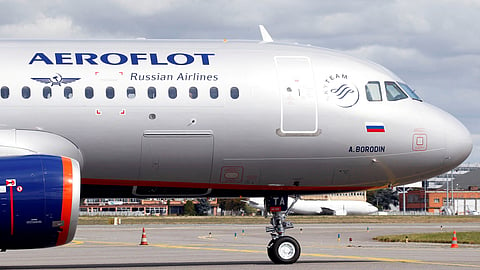

There are not a few aviation experts who are surprised that Russia’s commercial airlines are still taking to the skies despite a range of biting international sanctions targeting the country’s aviation sector. Not long after the beginning of the war in Ukraine, Western countries barred their airspace to Russia’s airlines; foreign airlines cut their commercial ties to them, and plane makers such as Boeing and Airbus stopped delivering crucial spare parts to Russia.
According to those experts, it wouldn’t take more than two weeks before commercial aviation in Russia collapsed. Nine months into the war, however, reports about Russian aviation’s imminent death are proving to be premature. Flight services for Russian passengers operate seemingly uninterrupted, at least on domestic routes. How can that be? “It’s a combination ofthings,” argues Richard Aboulafia, an aviation expert from US aerospace consulting firm AeroDynamic Advisory. “Leaky sanctions are definitely a part of it…existing parts inventories, creative workarounds and cannibalism,” he told DW.
Before the Ukraine war, Russian airlines operated more than 800 aircraft, almost all of them made by Western manufacturers. The latest available data provided by the country’s state-owned airline, Aeroflot, shows that more than 120 million passengers used the country’s airlines in 2019. More than half of them took international flights, which have meanwhile been cancelled completely amid the sanctions regime.
Aboulafia said the thinning out of flight schedules has come to be a blessing for the airlines, allowing them to disassemble the grounded planes and maintain domestic services. “I’m sure their priority is preserving domestic air travel. When you no longer have to worry about international routes that allows you to save a lot of miles on your fleet, and put the maintenance resources and components into that domestic capacity.”
Russian airline expert Anastasia Dagaeva agrees. She told DW that disassembling idled airplanes was “a possibility to secure critical components” as long as there are no other procurement options available and fewer planes needed. Russian commercial airlines currently operate almost entirely modern Western aircraft made by Boeing and Airbus. Most of them are operated on leases from international companies — a business model facilitated by the so-called Cape Town Convention. The international treaty was signed in the South African city in 2001, reducing the risks for creditors, and consequently, the borrowing costs to debtors, through improved legal certainty.
“The convention allowed international financiers to assume that everybody was in a pretty good credit risk. Therefore, they were eager to finance jets in emerging markets and Russia was no exception,” Aboulafia explained. As Russia began rejuvenating its commercial airliner fleet in the years after 2001, replacing its old Soviet-made aircraft, it also adopted Western maintenance schedules and airline safety standards. As those binding schedules could no longer be guaranteed by the Russian airlines in the wake of the sanctions, many investors demanded their leased aircraft back — more than 500 jets worth well over $10 billion.
However in March, Russian President Vladimir Putin signed into law regulation allowing the country’s airlines to register their aircraft in Russia — a move that “effectively meant we have stolen the planes,” said independent Russian aviation expert Vadim Lukashevich.
Visit news.dtnext.in to explore our interactive epaper!
Download the DT Next app for more exciting features!
Click here for iOS
Click here for Android